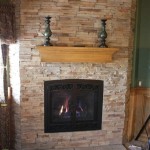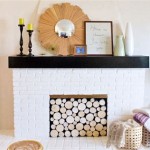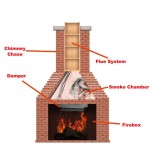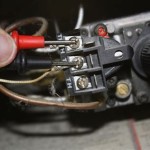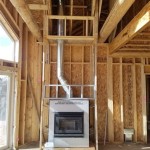The Allure of Fireplaces in Master Bedrooms and Bathrooms
Fireplaces, historically a necessity for heating, have evolved into a sought-after luxury in modern homes. Their presence adds a layer of warmth, ambiance, and sophistication to any space. While traditionally found in living rooms or dens, fireplaces are increasingly being incorporated into master bedrooms and, less commonly, bathrooms. This article explores the benefits, considerations, and types of fireplaces suitable for these intimate spaces.
Increased Home Value and Market Appeal
One of the most significant benefits of installing a fireplace in a master bedroom or bathroom is the potential increase in home value. Real estate listings often highlight features that enhance the overall appeal and perceived luxury of a property. A well-designed fireplace can serve as a focal point, drawing attention to architectural details and creating a sense of comfort and indulgence. Homebuyers often view fireplaces as desirable amenities, translating to a faster sale and potentially a higher selling price.
The perceived value extends beyond mere monetary gain. A fireplace can elevate the perceived quality of life within the home. It suggests a commitment to relaxation and self-care, appealing to buyers who prioritize comfort and tranquility. In competitive real estate markets, such features can differentiate a property and make it more attractive to discerning buyers.
The return on investment (ROI) for a fireplace installation depends on several factors, including the type of fireplace chosen, the complexity of the installation, and the overall market conditions. However, in general, a fireplace, particularly a gas or electric model, can be a worthwhile investment if it aligns with the overall aesthetic and functionality of the home.
Creating a Relaxing and Intimate Atmosphere
Beyond financial considerations, the primary appeal of a fireplace in a master bedroom or bathroom is the creation of a relaxing and intimate ambiance. The visual element of dancing flames and the gentle heat radiating from the fireplace can induce a sense of calm and tranquility. This is especially valuable in the master bedroom, a private sanctuary where individuals seek to unwind and de-stress after a long day.
The ambiance created by a fireplace can enhance various activities within the bedroom. Reading a book by the fireside, enjoying a quiet conversation, or simply relaxing before sleep can be significantly more enjoyable with the comforting presence of a fireplace. The flickering light can also contribute to a more romantic and intimate atmosphere, fostering connection and relaxation.
Similarly, a fireplace in the bathroom can transform a functional space into a spa-like retreat. Imagine soaking in a warm bath with the soothing glow of a fireplace, creating a luxurious and restorative experience. This can be particularly beneficial during colder months, providing a comforting warmth and a visual focal point that promotes relaxation and well-being.
The psychological benefits of a fireplace are well-documented. The visual element of fire has a calming effect on the mind, reducing stress and promoting relaxation. The gentle heat can also help soothe muscles and ease tension, contributing to a sense of overall well-being. These factors make a fireplace a valuable addition to any space designed for rest and rejuvenation.
Types of Fireplaces Suitable for Bedrooms and Bathrooms
Choosing the right type of fireplace is crucial for ensuring safety, functionality, and aesthetic appeal. Several options are available, each with its own advantages and disadvantages.
Gas Fireplaces: Gas fireplaces are a popular choice due to their convenience and ease of use. They can be easily turned on and off with a switch or remote control, and they produce consistent heat output. Gas fireplaces are available in a variety of styles, from traditional to contemporary, allowing for seamless integration into any décor. They require a gas line connection and proper ventilation, which may require professional installation.
The advantages of gas fireplaces include their ease of operation, consistent heat output, and relatively low maintenance requirements. They are also generally safer than wood-burning fireplaces, as they do not produce sparks or embers. However, gas fireplaces can be more expensive to install than other types, and they require a continuous supply of natural gas or propane to operate.
Electric Fireplaces: Electric fireplaces are another convenient option, particularly for spaces where gas line access is limited or impractical. They are relatively easy to install, requiring only a standard electrical outlet. Electric fireplaces use heating coils to generate heat, and they often feature realistic flame effects that mimic the appearance of a real fire. They are available in a variety of styles and sizes, including wall-mounted, freestanding, and insert models.
The advantages of electric fireplaces include their ease of installation, affordability, and low maintenance requirements. They are also a safe option, as they do not produce real flames or emissions. However, electric fireplaces typically produce less heat than other types, and their flame effects may not be as realistic as those of gas or wood-burning models.
Wood-Burning Fireplaces: Wood-burning fireplaces offer a traditional and authentic fireplace experience, complete with the crackling sound and aroma of burning wood. They produce a significant amount of heat and can be a cost-effective option in areas where wood is readily available. However, wood-burning fireplaces require more maintenance than other types, including regular cleaning and chimney sweeping. They also pose a greater fire risk and require careful attention to ventilation and safety precautions.
The advantages of wood-burning fireplaces include their authentic appeal, significant heat output, and potential cost savings on fuel (if wood is readily available). However, they also require more maintenance, pose a greater fire risk, and may not be suitable for all locations due to environmental regulations or building codes.
Ethanol Fireplaces: Ethanol fireplaces are a ventless option that burns liquid ethanol fuel. They are relatively easy to install and can be a good choice for spaces where traditional venting is not possible. Ethanol fireplaces produce real flames and heat, but they typically have a lower heat output than gas or wood-burning models. They also require the purchase of ethanol fuel, which can be more expensive than natural gas or wood.
The advantages of ethanol fireplaces include their ventless design, ease of installation, and clean-burning fuel. However, they also have a lower heat output, require the purchase of ethanol fuel, and may not be suitable for all locations due to flammability concerns.
Safety Considerations and Installation Requirements
Safety is paramount when installing any type of fireplace, particularly in bedrooms and bathrooms. Proper ventilation is essential to prevent the buildup of dangerous gases, such as carbon monoxide. Carbon monoxide detectors should be installed in all bedrooms and hallways near the fireplace to provide early warning in case of a leak.
Installation requirements vary depending on the type of fireplace chosen. Gas fireplaces require a gas line connection and proper ventilation, typically through a chimney or direct vent system. Electric fireplaces require only a standard electrical outlet, but the wiring may need to be upgraded to handle the electrical load. Wood-burning fireplaces require a chimney and proper clearance from combustible materials. Ethanol fireplaces require careful attention to flammability and ventilation.
It is highly recommended to hire a qualified professional to install any type of fireplace. A professional installer can ensure that the fireplace is installed safely and according to local building codes. They can also advise on the best type of fireplace for the specific space and provide guidance on ventilation, safety precautions, and maintenance requirements.
Regular maintenance is also crucial for ensuring the safe and efficient operation of a fireplace. Gas fireplaces should be inspected annually by a qualified technician to check for leaks and ensure proper functioning. Wood-burning fireplaces should be cleaned regularly to remove creosote buildup, which can pose a fire hazard. Electric fireplaces should be inspected for damaged wiring or components. Ethanol fireplaces should be handled with care to prevent spills or leaks.
Design Considerations for Master Bedrooms and Bathrooms
Integrating a fireplace into a master bedroom or bathroom requires careful consideration of design elements. The fireplace should complement the overall style of the room and serve as a focal point without overpowering the space. The size and placement of the fireplace should be proportionate to the room and take into account existing furniture and architectural features.
The materials used for the fireplace surround and hearth should be chosen to complement the overall décor. Stone, brick, tile, and wood are all popular choices, each offering a unique aesthetic. The color and texture of the materials should be carefully considered to create a cohesive and visually appealing design.
The style of the fireplace should also be consistent with the overall design of the room. A traditional fireplace with ornate details may be appropriate for a more formal master bedroom, while a sleek and modern fireplace may be better suited for a contemporary space. The fireplace should be integrated seamlessly into the room to create a harmonious and inviting atmosphere.
In bathrooms, the fireplace should be positioned to maximize relaxation and enjoyment. A fireplace near the bathtub can create a spa-like atmosphere, while a fireplace near a seating area can provide a cozy spot to unwind after a shower or bath. The fireplace should be positioned to avoid obstructing traffic flow or interfering with the functionality of the bathroom.

51 Mesmerizing Master Bathrooms With Fireplaces

Homedit Interior Design And Architecture Inspiration Double Sided Fireplace Built Ins Bathroom

Master Bedroom Double Fireplace In And Bathroom Seattle By Architectural Innovations Houzz

Contemporary Bathroom Fireplaces Atticmag

Pin On Building Some Day

Master Suite Remodel With Fireplace And Free Standing Tub Highcraft

Bathroom Double Sided Fireplace Design Ideas

Inspired Bathroom Fireplace Ideas For Your Home

Pin On 1 Cabin

Two Sided Fireplace In Master Bedroom And Bathroom Traditional Other By Denise Quade Design Houzz
Related Posts

